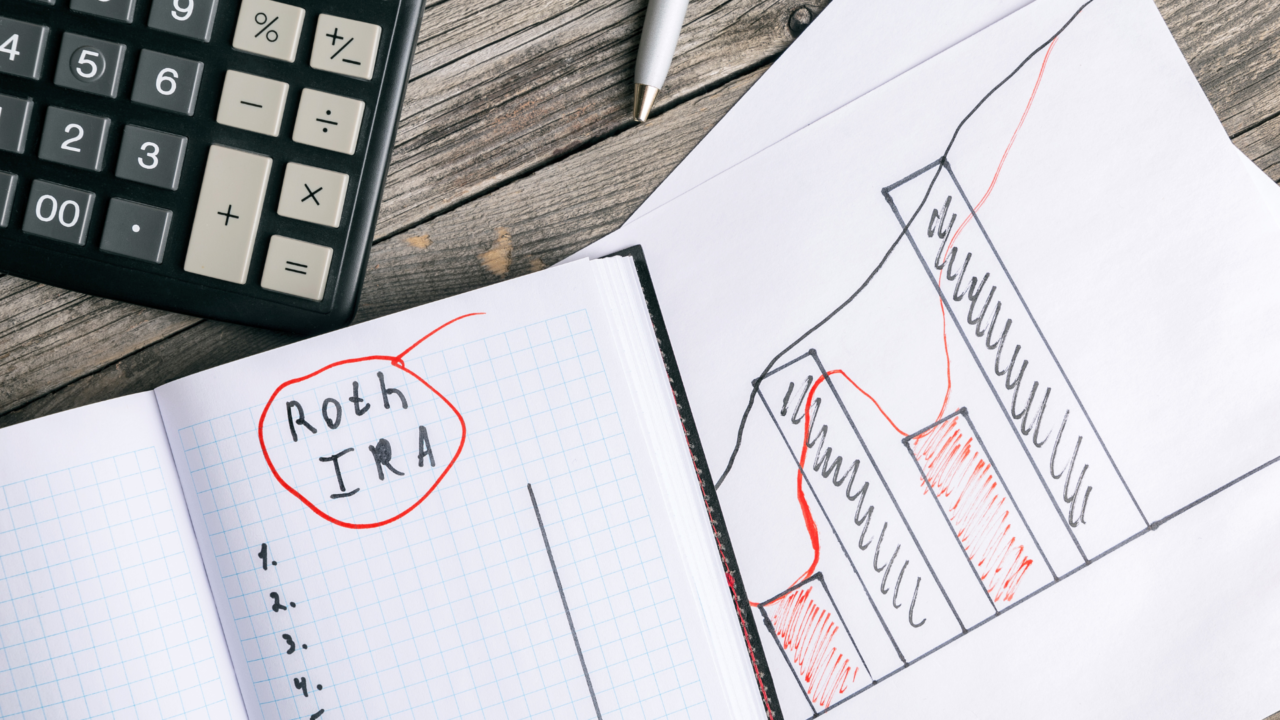You’ve heard of a Roth IRA, and like the tax benefits it provides, but you want more from your investment portfolio. Specifically, you want to use your retirement funds to invest in assets with a higher earning potential or a better chance of providing a long-term investment income.
A self-directed Roth IRA can offer the best of both worlds.
What Is a Self-Directed Roth IRA?
A self-directed Roth IRA is a retirement account that allows you to invest in non-traditional assets, like real estate and precious metals, and more common assets, such as publicly-traded stocks. When you open this type of account, you gain direct control over how and where your funds are invested instead of depending on your custodian or trustee to make investment decisions.
In addition, a self-directed Roth IRA maintains all the same characteristics and benefits as a regular Roth account, such as
- Contributions made with post-tax dollars and tax-free growth
- Untaxed withdrawals
- Withdrawals available at any time (after 59 ½)
- Non-qualified earning withdrawals (subject to a 10% penalty)
What Assets Can I Invest in with a Self-Directed Roth IRA?
With a self-directed Roth IRA, you can invest in stocks, bonds, index funds, and mutual funds as well as the following:
- Real estate
- Precious metals, such as gold, silver, and palladium
- Limited partnerships (LPs)
- Limited Liability Companies (LLCs)
- Private Equity
- Commodities
- Livestock
- Promissory notes
Self-Directed Roth IRA Rules and Prohibited Transactions
Like other types of IRAs, self-directed Roth IRAs are governed by the IRS, and you must understand and follow the rules and regulations. Failure to do so can result in penalties that erode your savings.
Here are a few things to remember:
Contribution limits
Self-directed Roth IRAs are subject to contribution limits. For the 2022 tax year, contributions are limited to $6,000 ($7,000 if you’re 50 years of age or older). In 2023, those limits will increase to $6,500 ($7,500 if you’re 50 years of age or older).
Roth IRAs also have additional contribution requirements based on an individual’s modified adjusted gross income (AGI) and marital status. The IRS maintains a list of Roth Contribution limits, and it’s a good idea to review them to ensure your account complies.
However, rollover contributions, which are contributions moved from one qualified retirement account to another, are not subject to annual limits.
Withdrawals and distributions
Since Roth contributions are made with post-taxed dollars, you can withdraw contributions penalty-free if your account has been open for five years. If you want to withdraw from earnings, you must wait until 59 ½ if you don’t want to be penalized. There are exceptions, however.
You can withdraw from earnings early if you are using the funds to:
- Purchase your first home (up to $10,000)
- Cover qualified educational costs
- Pay for qualified birth or adoption expenses
- Cover unreimbursed medical expenses
You can also withdraw funds without penalty if you become disabled, and your beneficiary can withdraw funds if you pass away.
Disqualified individuals
The IRS sets specific rules about how certain individuals can engage with your self-directed IRA account. This is particularly important for self-directed IRAs, as investments often include tangible items, like real estate.
The IRS names several individuals considered “disqualified individuals,” including your “spouse, ancestor, lineal descendant, or any spouse of a lineal ascendant.” In addition, if one of those individuals owns at least 50% of a corporation or other entity, that entity also becomes a disqualified individual.
Your account custodian or trustee and other individuals, like financial advisors, are also considered disqualified.
Prohibited Transactions
The IRS identifies a prohibited transaction as one between the IRA and a disqualified person. Individuals who engage in a prohibited transaction must pay a tax.
In general, prohibited transactions refer to any transaction in which a disqualified person benefits. For example, if you purchase real estate in the name of your self-directed Roth IRA, you and your family are prohibited from living in the property. You also can’t use the property for business purposes.
Likewise, if you purchased a property and wanted to renovate it, you couldn’t do it yourself or hire a disqualified person or entity to complete the work.
Additional prohibited transactions may also include borrowing money from your IRA, selling property to it, or using it to secure a loan.
Tips for Starting a Self-Directed Roth IRA
To help you start a self-directed IRA, we’ve outlined a few steps below.
Find the right custodian.
Even though self-directed IRAs put control in your hands, the IRS still mandates that all accounts are held and administered by a custodian. This isn’t unique to self-directed IRAs–all IRAs need to be held by a custodian or trustee. However, not all financial institutions offer self-directed IRAs.
When you’re looking for a custodian, it’s important that you find one that is certified by the IRS. Beyond that, your primary focus should be choosing one with experience in the asset(s) you wish to invest in, whether that’s real estate, cryptocurrency, or any other assets available to self-directed account holders.
Other factors to remember include a custodian’s fee schedule, transaction speed, and overall customer service.
Do your research
The beauty of a self-directed IRA is that you make all the decisions about how you amass wealth. That also means that the responsibility of vetting and due diligence falls directly on you. Your custodian will help with the administration and transactional side of your account, but they won’t offer advice on how, when, or where to invest your funds.
Before you engage in an investment opportunity, take the time to do your research. You may also want to consider working with a financial advisor or industry expert who can help you understand the risks, stakes, and rewards.
Have a funding strategy.
It’s no secret that you need money to make money, or so the saying goes. If you plan on opening a self-directed Roth IRA, you’ll need to decide how to fund it.
You can fund your account in three ways: a new contribution, a transfer from one retirement account to another, or a rollover.
If you are making an initial contribution, such as moving money from your savings account to your retirement account, you can contribute up to the annual IRS limit of $6,500 in 2023 ($6,000 in 2022). If you’re over the age of 50, you can also make an additional catch-up contribution of up to $1,000.
If you’re transferring from one retirement account to another, it’s important that you move funds between like accounts. In other words, if you’re opening a self-directed Roth IRA, you’d need to transfer funds from a regular Roth IRA. There are no limits that cap the amount you can transfer between accounts.
A rollover allows you to move funds from one type of account to another, a 401k to an IRA, for example. In this case, you can choose a direct rollover or an indirect rollover.
A direct rollover is the simplest path forward, as the money moves “directly” from one custodian to another. An indirect rollover, also known as a 60-day rollover, is one where you take possession of the funds from one custodian and then deposit them in another. In this case, you have 60 days to complete the transaction or face taxes and penalties.
Takeaways
A self-directed Roth IRA is a great tool to help you take control of the investment opportunities you believe in. Because of its Roth characteristics, this type of account will give you tax-free benefits while your funds grow and when you take qualified withdrawals.
If you’re considering a self-directed IRA, Roth or otherwise, contact Horizon Trust to learn more about how we can help you realize your future. Our financial experts have the knowledge and experience to help you get started investing in many alternative assets.
Related Posts
July 23, 2024
SIMPLE IRA vs SIMPLE 401(k): Which One Is Better for My SMB?
Simple IRAs and Simple 401Ks have many similar features for your employees.…





